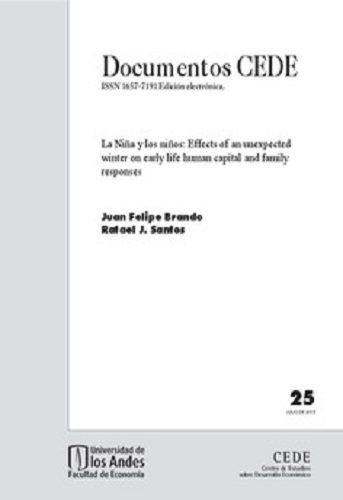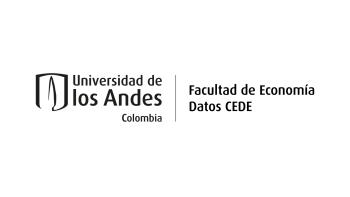Documento CEDE 2015-25

La Niña y los niños: Effects of an Unexpected Winter on Early Life Human Capital and Family Responses
Brando, Juan Felipe; Santos, Rafael J.
We use rainfall shocks caused by La Nina in Colombia between 2010 and 2011 as a source of variation in the inputs of human capital formation. We have outcomes in 2013 for kids 0 to 5 years old and their household characteristics just before La Nina. We measure exposure using the number of days of heavy rains at different ages according to the day of birth of the kid, the exact location of his household and the closest weather station. Exposure in utero reduces birth-weight (0.19SD), weight gain per month (0.07SD), actual weight (0.15SD) and height (0.12SD). Exposure during the second year of life increases the risk of socioemotional problems (0.19SD) and decreases results in cognitive tests (0.10SD). Consistent with reinforcement, children who receive a shock during a critical period also receive less investment by their families. Households were not able to shield their consumption and they cut their expenditures in health and education (0.06SD). However the majority of households do not acknowledge being directly affected by the winter.


